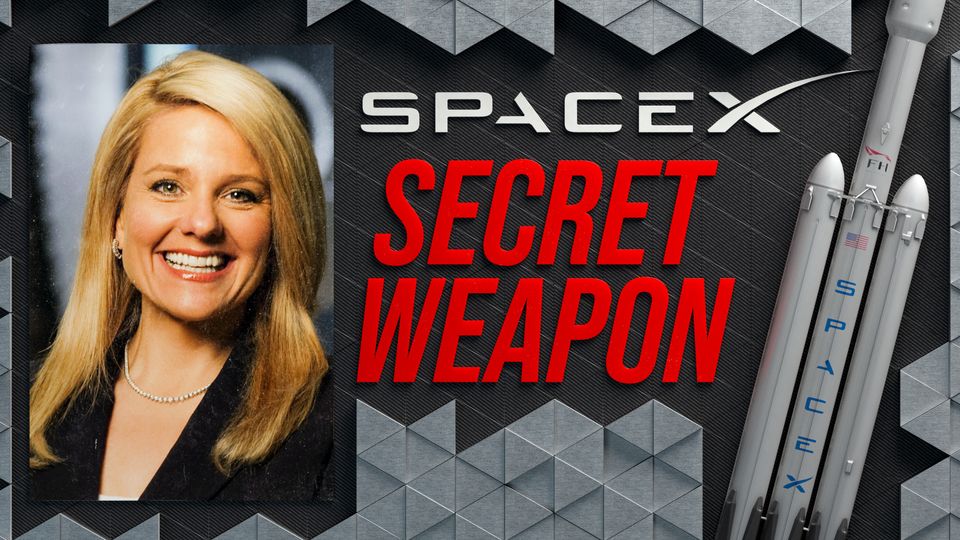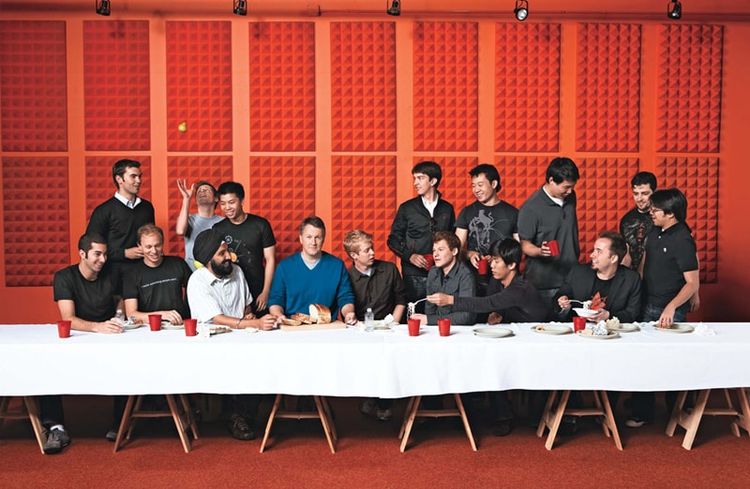How Gwynne Shotwell Became President Of SpaceX

Elon Musk runs not one but two incredible companies: Tesla and SpaceX.
While Elon is heavily involved with both companies, he doesn’t actually run SpaceX day-to-day. The flight logs from Elon’s private jet make it clear that Tesla is his number one priority while SpaceX is a close second.
In reality, Gwynne Shotwell is the person in charge of SpaceX and the reason the company keeps hitting all of the highly optimistic milestones that Elon sets.
Even though no one seems to talk about her, Gwynne is one of the best operators in the entire tech industry and is one of the main reasons for SpaceX’s dramatic growth. Hiring a great operator to help execute a massive vision is one of the best things that an entrepreneur like Elon can do. Lots of founders hire “adult supervision” when their companies start to get quite large. Mark Zuckerberg hired Sheryl Sandberg as his Chief Operating Officer in 2008, when the company was just a few years old.
At SpaceX, Gwynne is both the Chief Operating Officer and also the President of the company. And that extra title is important.
The title of President can mean a lot of different things depending on the company, but for SpaceX, Gwynne’s much more than a second in command. In reality, SpaceX would be nowhere without her.
Whenever Elon posts an audacious tweet suggesting that a new SpaceX rocket might blow up, it’s Gwynne Shotwell who flies all over the world to assure key business partners that the launch will go according to plan. She’s a steadying force in the company, but that doesn’t mean she isn’t 100% aligned with Elon’s ambitions. She wants to create a Mars colony as much as Elon does, but unlike Elon, she has a financially viable plan to accomplish this.
Not much has been written about Gwynne Shotwell, so I had to dig through interviews and podcasts to figure out what’s allowed her to scale SpaceX so effectively. The space industry is highly regulated, extremely capital intensive, and just incredibly difficult to succeed in. It is literally rocket science, after all. But, I think I’ve nailed down how Gwynne thinks about business, so let me summarize it in three separate parts.
Gwynne Shotwell’s Background
Before Shotwell became President of SpaceX, Gwynne spent decades becoming an expert in the relevant skill sets needed to succeed in the aerospace industry. Many startup ideas don’t require highly technical expertise; just look at all the social networks founded in dorm rooms by college dropouts that are now worth billions. But rocketry is a little different.
Gwynne didn’t know that she wanted to work in the aerospace industry as a kid. She’s said that she never dreamed of being an astronaut, which is kind of crazy since everyone I know had that dream as a kid. But, she did have a fascination with engineering and leaned into it at a young age.
As Shotwell says in a 2018 Ted Talk,
I don’t think I was nerdy, but I was definitely doing the things that the girls weren’t doing. I asked my mom, who was an artist, when I was in the third grade, how a car worked. She had no idea, so she gave me a book, and I read it, and sure enough, my first job out of my mechanical engineering degree was with Chrysler Motors in the automotive industry. - Gwynne Shotwell
Not many people are willing to crack open a book and start learning, but if you can buckle down and learn the science, you’ll have an incredible advantage over the competition.
Even with her impressive background, Elon Musk didn’t trust Gwynne to run SpaceX just because she was a talented engineer. By the time Gwynne joined SpaceX, she had worked in the aerospace industry for over a decade, which was incredibly important.
Many people think of themselves as their job title. A typical engineer might bounce around from an advertising company, to a bank, and then to a car company; and that can be a great career. But if you want to become a leader like Gwynne, it’s far better to focus on developing a breadth of relevant skills in your specific industry.
Instead of getting stuck in a particular division of SpaceX when she joined, Gwynne was able to wear many hats because she had so much aerospace experience. She came in as head of business development, which is essentially a sales role. But, because she understood the industry inside and out, Elon kept tapping her for bigger and bigger projects.
It can be uncomfortable to take on new roles at a growing company, but Gwynne understands that building a diverse skill set is key to successful leadership, and you’ll never build new skills if you don’t take risks.
In Northwestern's Virtual Commencement on June 15, 2021, Shotwell explained,
When I was considering joining SpaceX back in 2002, I was struggling with the decision and drawing it out for weeks. It seemed so risky for me personally to join this little startup in an industry where none had ever succeeded. At the time, I was a part-time single mother, and this was just too far out of my comfort zone. I was driving on the freeway here in LA when it finally hit me: I was being a total idiot. Who cares if I tried this job and either I failed or the company failed. What I recognized at that moment was that it was the trying part that was the most important. Try that risky thing. Be a part of something exciting. - Gwynne Shotwell
When opportunity knocks, you need to open the door. Joining a startup as employee number seven was extremely risky for Gwynne, but by taking a leap of faith, she put herself in the perfect position to expand her skillset and become a true leader in the aerospace industry.
Despite all her ambition and experience, Shotwell would be nothing without execution. After all, this was nearly 20 years ago, and SpaceX had a long road ahead of it. Becoming a successful rocket company would require an entirely new way of thinking about the business, and fortunately for SpaceX, Gwynne had discovered something incredible.
Gwynne’s Strategy Of Residual Capacity
If you’ve never heard the 'jargony' term “residual capability” before, don’t worry. Residual capability means building profitable business lines around technology you already have so that you can support longer-term projects. And this is Gwynne’s second key success factor: she’s a master of capitalizing on SpaceX’s residual capability.
There are a few great examples of ways that residual capability changed the game for SpaceX. The first is Starlink, their satellite internet network. SpaceX didn’t set out to create an internet service provider. Their stated mission is to make human life multi-planetary, after all. In fact, Elon Musk probably hadn’t thought about providing internet service from space when SpaceX started. The internet is cool and all, but it doesn’t have much to do with getting to Mars. At least, that’s what everyone thought before Gwynne created SpaceX’s financial plan.
Getting to Mars wasn’t going to be cheap. The rocket required to take a crew of people on the months-long journey will be massive. So Gwynne started breaking down Elon’s vision into small, incremental steps that could ultimately lead to a Mars colony.
We’ve all seen SpaceX launch satellites for other companies, but along the way, Gwynne realized that by launching their own satellites, they could create a sustainable business here on earth and help build technology that will be needed on Mars.
The reason for this is that the cost of each incremental SpaceX launch is decreasing over time. Every time they launch another rocket, they are learning important lessons and becoming a more efficient company. Launching a network of satellites into orbit for Starlink would cost billions of dollars, but once the satellites were up and running, they would generate profits for decades to come.
Additionally, a future Mars colony will need a communications network of its own. All that experience setting up satellite networks here on Earth will translate pretty directly into a Mars satellite network.
Gwynne was the perfect person to lead the Starlink effort at SpaceX because she had championed a deal with Iridium back in 2010.
SpaceX had great relationships with government customers, but doing business with independent corporations would be important too. So Gwynne signed a $492 million contract to launch 75 Iridium satellites into orbit using Falcon 9 rockets.
She figured out how to bring in extra business for SpaceX back in 2010, and that experience allowed her to leverage that “residual capability” to start an entirely new business line with Starlink in 2015. But that’s not the only time Gwynne has championed this idea of “residual capability” at SpaceX.
In fact, the entire design philosophy of SpaceX’s Falcon Heavy Rocket is based on the idea of residual capability.
Shotwell explains,
It’s exactly this residual capability. So we developed the Merlin engine for the Falcon 1 launch vehicle. We could have tossed that engine and built an entirely new engine for the Falcon 9. It would have been called something different because Falcon 9 is nine Merlin engines, but instead of spending a billion dollars on a brand new engine, we put nine of them together on the back end of Falcon 9. Residual capability: glue three Falcon 9s together, and you have the largest operational rocket flying. And so it was expensive to do, but it was a much more efficient path than starting from scratch. - Gwynne Shotwell
Shotwell, The Driving Force Behind SpaceX Point To Point
SpaceX is planning to offer point-to-point travel on Earth to allow people to get from New York to Shanghai in just 30 minutes. Developing this business from scratch would be nearly impossible, but because Gwynne had successfully executed on so many other SpaceX projects, they now have a real shot at making this a reality, although it probably won’t happen for years.
Gwynne has been asked directly about when this point-to-point capability would be widely available. Her answer: “Within a decade, for sure... I'm sure Elon will want us to go faster.”
This response tells you everything you need to know about why Gwynne has been so successful at SpaceX. Elon is notorious for being overly optimistic about timelines, and Gwynne acknowledges that while still maintaining ambitious goals.
Gwynne Shotwell And Elon Musk
Too many people hear Elon announce an aggressive timeline and instantly write him off because it seems impossible. However, Gwynne understands that Elon’s timelines might be overly ambitious but that he’s directionally correct about where technology is going in the future. As a result, she is 100% on board with his vision.
It’s common knowledge that Elon can be a demanding boss, but Gwynne has been working alongside Elon for nearly 20 years now, and she wouldn’t stick around if they didn’t see eye-to-eye on the future. And this is what makes her such a great leader at SpaceX: She loves absurd goals.
Set and try to achieve absolutely absurd goals, and don’t be afraid of failing if you can’t achieve them. - Gwynne Shotwell
This idea of setting absurd goals is extremely powerful, mostly because of human psychology. This relates to Parkinson's Law, which states that work expands to fill the time available for its completion.
To put it simply, the amount of work required scales to the time available for its completion. So if the SpaceX team said something like: “getting to Mars will be extremely hard and will probably take 50 years,” - they would almost certainly spend 50 years on the project!
But the downside risk of setting an absurd goal is very minimal. Sure, people might make fun of you, but none of that matters. Just keep building towards that goal, and you will eventually achieve great things.
Elon continues to set particularly absurd goals, while Gwynne is typically a bit more measured in her estimations. After all, it’s her responsibility to keep the company alive. But the key thing to note here is that she is still completely aligned with Elon on SpaceX’s goals. She has the same ability as Elon to think long-term and imagine what’s possible for humanity over decades instead of just years.
Gwynne has made plenty of money at this point, but I think what keeps her going is a desire to improve the lives of future generations. She already has children and has said she wants grandchildren. So even if SpaceX can’t accomplish every single goal within her lifetime, Shotwell will be remembered for hundreds of years as someone who helped change the course of humanity forever. And that’s incredibly powerful.
This post is also available as a YouTube video:




